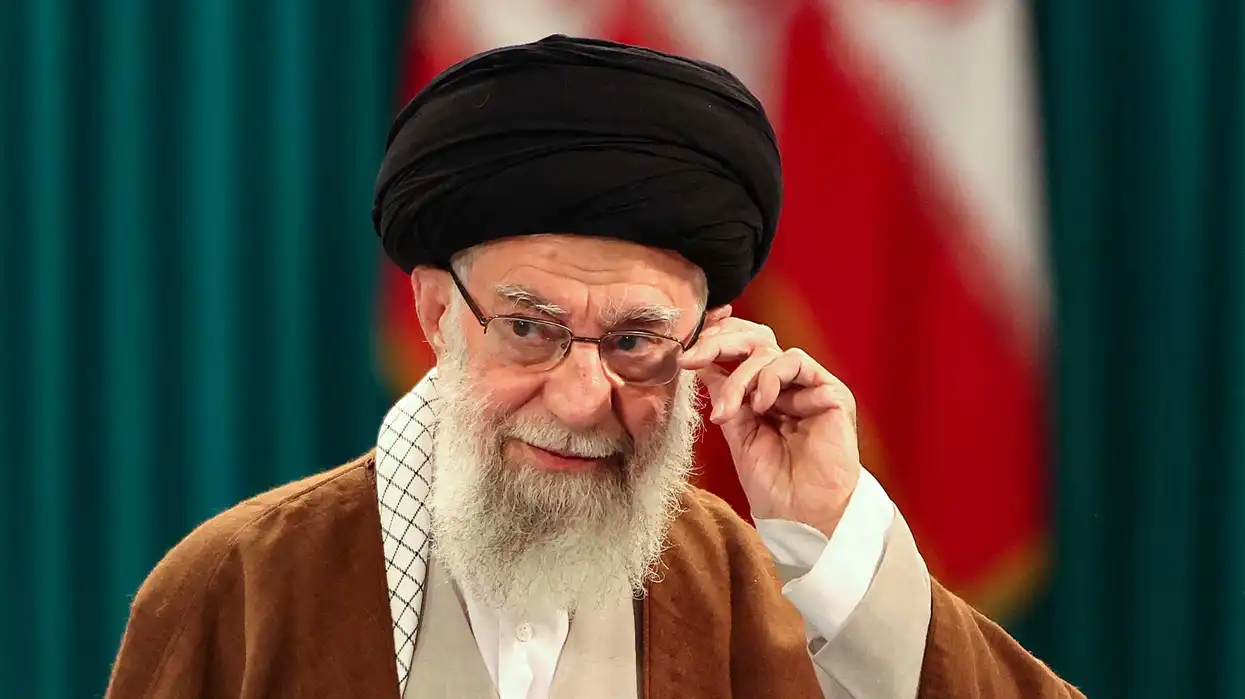
© 2025 Blaze Media LLC. All rights reserved.
"Iran's currency hit a record low of 35,500 rials against the U.S. dollar..."
Some of you may be wondering about that Iranian "currency protesters" headline on the Drudge Report:
 For those unfamiliar with what's going on over there, here's the situation: Iran's currency (the rial) is going through an insane and messy collapse. Analysts blame both Western sanctions against the country's oil exports and poor fiscal decisions made by Iranian leaders for the country's current state of affairs.
For those unfamiliar with what's going on over there, here's the situation: Iran's currency (the rial) is going through an insane and messy collapse. Analysts blame both Western sanctions against the country's oil exports and poor fiscal decisions made by Iranian leaders for the country's current state of affairs.
But regardless of the cause, the bottom line is this: Iran's currency is falling apart, shedding "more than a third its value in less than a week," according to the Associated Press, and things are starting heat up over there.
"Police threatened merchants who closed their shops in Tehran's main bazaar and launched crackdowns on sidewalk money changers on Wednesday as part of a push to halt the plunge of Iran's currency" the AP notes, adding that the currency meltdown has "put some staples such as chicken and lamb out of reach of many low-income Iranians."
Yes, it has gotten to the point where merchants in Tehran are staging massive protests:
In fact, even the Iranian state press is publicly mocking Achmed Ahmadinejad for the meltdown:
#Iran papers launch an all-out attack on Ahmadinejad, mocking, "If u can't fix the rial, how can u manage the world!?"— RezaAsadi (@RezaAsadi) October 3, 2012
But how about a visualization of Iran's currency collapse? The following chart from Iranian journalist Reza Asadi illustrates how many rial it takes to buy a dollar over the last 70 days [note: the graph is on the Persian calendar (i.e. it’s 1391)]:
 Yikes.
Yikes.
"Iran's currency hit a record low of 35,500 rials against the U.S. dollar Tuesday on the unofficial street trading rate, which is widely followed in Iran. It was about 24,000 to the dollar a week ago and close to 10,000 rials for $1 as recently as early 2011," the AP reports.
"Exchange houses were closed Wednesday and currency websites were blocked from providing updates," the report adds.
For his part, Ahmadinejad insists the rial's decline is because of "psychological pressures" from international sanctions and currency speculators and not because of government policies.
Follow Becket Adams (@BecketAdams) on Twitter
(H/T: Business Insider). Front page photo source courtesy the AP.
Want to leave a tip?
We answer to you. Help keep our content free of advertisers and big tech censorship by leaving a tip today.
Want to join the conversation?
Already a subscriber?
more stories
Sign up for the Blaze newsletter
By signing up, you agree to our Privacy Policy and Terms of Use, and agree to receive content that may sometimes include advertisements. You may opt out at any time.
Related Content
© 2025 Blaze Media LLC. All rights reserved.
Get the stories that matter most delivered directly to your inbox.
By signing up, you agree to our Privacy Policy and Terms of Use, and agree to receive content that may sometimes include advertisements. You may opt out at any time.






